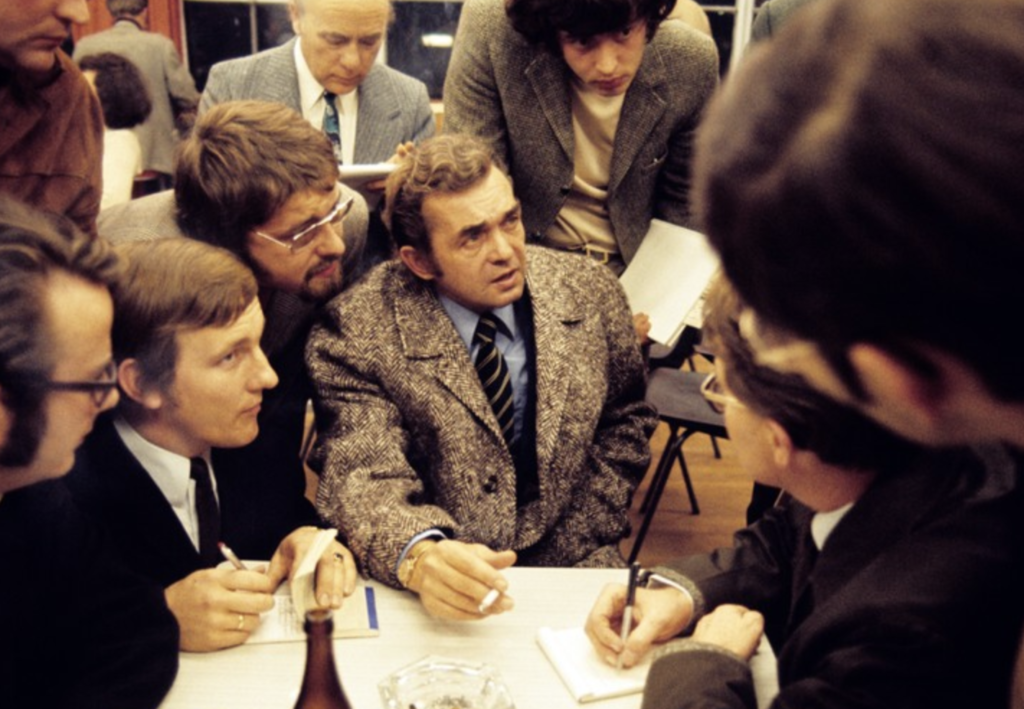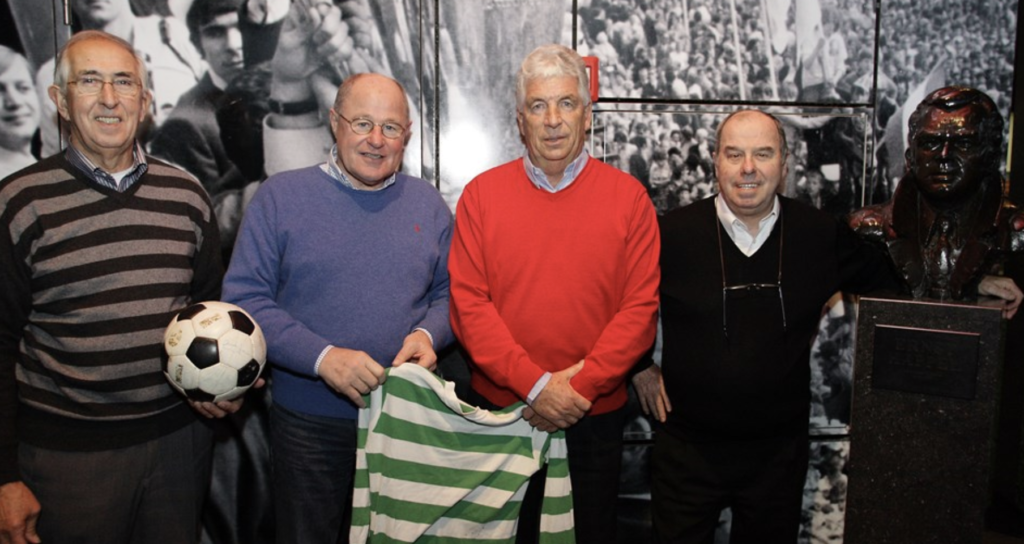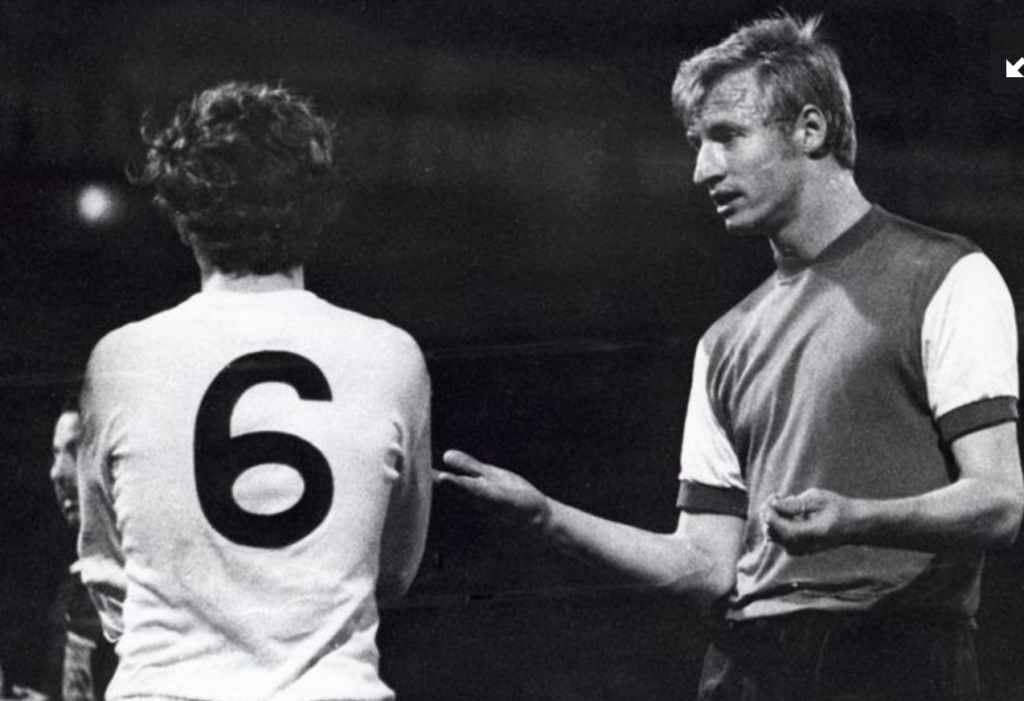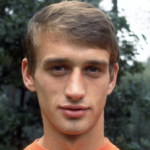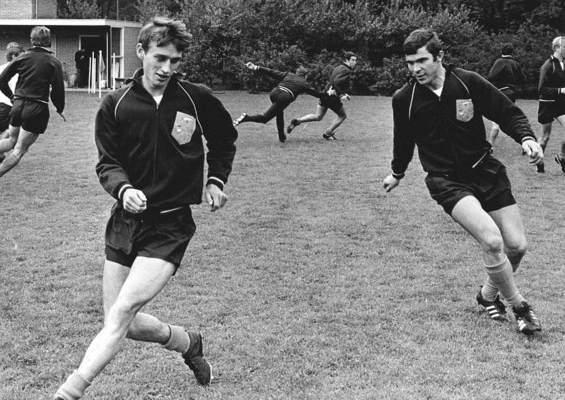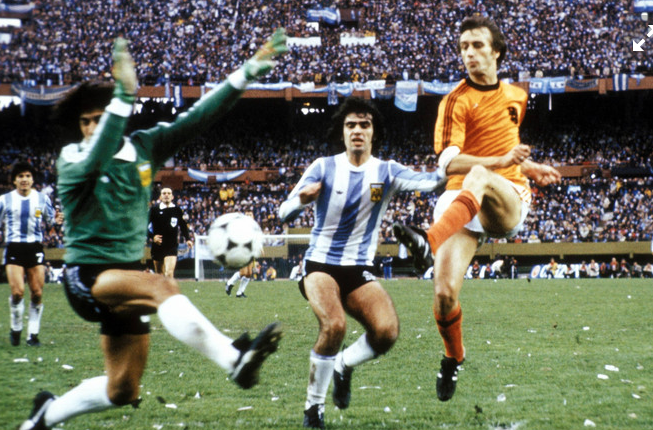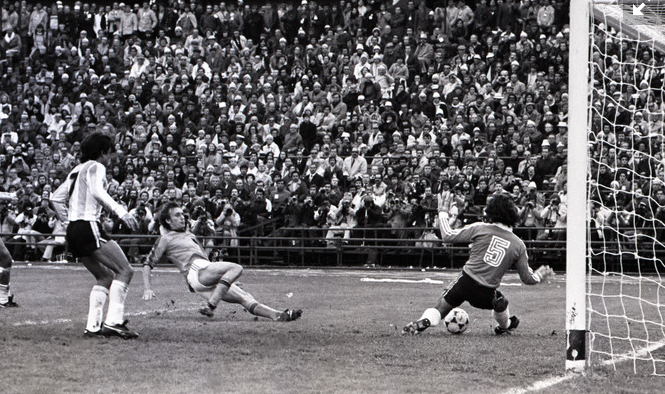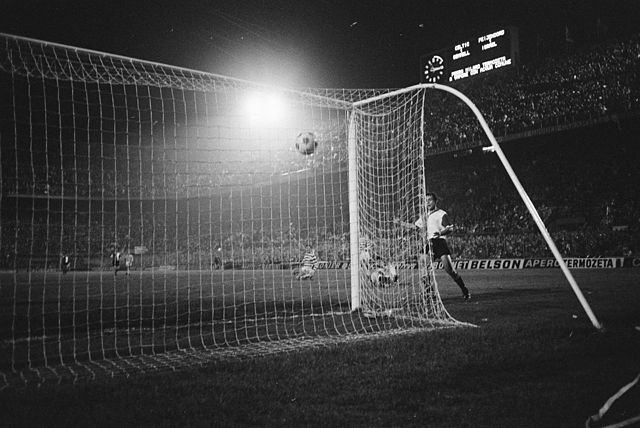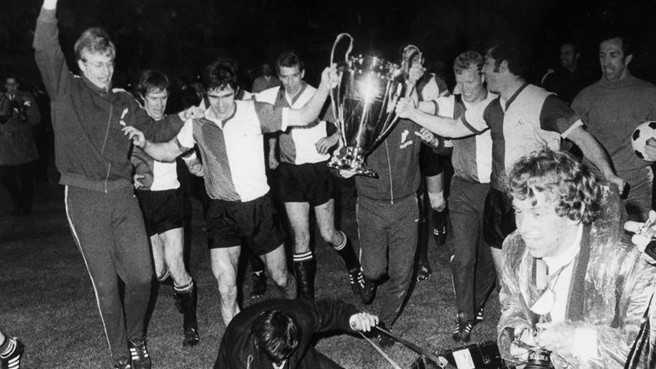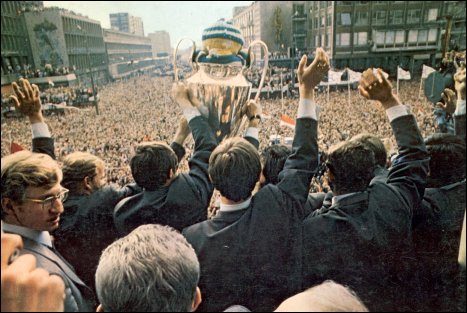In the late 60s, Ajax had a first stab at it, but they lost their finals, vs Internationale, 4-1. The still playful and naive Ajax players vs shrewd and ruthless Italians…
The next season, Feyenoord led the way. And Coach Ernst Happel and his key players Moulijn, Van Hanegem, Jansen and Israel created the template which Michels, Cruyff and Co would perfect in the ensuing years… Dutch football was never the same.
Coach Ernst Happel is famous in Holland for his typical quote: “Kein keloel, fussball spielen!”. Which translates as “Stop talking, just play football!”.
He was a no nonsense guy. A tremendous football player himself, for Austria and Rapid Wien and Racing Club Paris. As a coach, he immediately won the respect when at the first training, he placed several empty bottles on the cross bar, and placed balls outside of the box. And he then hit the balls which would all hit a bottle. The Feyenoord squad has just seen that their coach knows how to hit a football.
In Austria, Happel was never seen as a potential top coach. He loathed theory and was never part of the incrowd. But after he won the European Cup with Feyenoord, the Austrian federation invited him for a presentation at some seminar. “The people in the room were silent and hung onto every word. It was just fantastic. His pitch was just incredible!”.
Happel was the first coach to win the European Cup with two different clubs: Feyenoord and Hamburger SV. He did reach the finals again, with Club Brugge but lost. He won titles in four different countries and the national cup in four different countries. He reached the finals of the World Cup 1978 with the Dutch national team.
His biggest issue was his lack of language skills. He spoke German. That’s it. So he never did long tactical talks. He would observe, say something here and there and use simple commands like “Geh ma raus!”, which translated as “Move forward!”. The training and practice sessions, however, were such that the players didn’t need to hear longwinded tactical talks. “He could communicate to every single player exactly what he wanted. But he didn’t do it with words, but with practices.”
Should Happel have had the same audacity as other coaches to write a book about his methods and vision, he would have been an international guru in the same vein as Michels, Mourinho or Sacchi. But he never did. He wasn’t interested in becoming a guru. The following three topics form the foundation of Happel’s football sacraments.
The Off-side Trap
Maybe to clear this up first: Happel didn’t invent Total Football as a mathematical formula. He was a man of the pitch, not a theory guy. He would create solutions based on the players he had at his disposal. With him, it was an organic process. Former Ajax back (and part of the Feyenoord squad when they won the Cup in 1970) Theo van Duivenbode: “Michels was great in developing a tactical plan at the start of a game and he’d try to hold on to it. Happel was different. Happel was capable of seeing where things didn’t work in a match and he’d tweak it while we were playing. I think Happel read the games way better than Michels.”
The Off-side trap, a mechanism that would impress the world in 1974 when the Dutch successfully used it at the World Cup 1974 was something Happel came up with in 1949 (!). He was the main man in the Rapid Wien team, one of the best teams in Europe. Rapid went to play in Brazil vs Vasco da Gama and was played off the pitch, trailing 3-0 in a short spell. After the break, the Vasco manager told his players to take it easy. The end result: 5-0.
The 22 year old Ernst Happel couldn’t sleep and decided to analyse the game that night with his coach Pesser and technical director Franz Binder. Pesser: “We were humiliated. We had never had this before. We spent hours jotting on pieces of paper and analysing what they did. Their coach Flavio Costa was an innovator, who laid the foundation for Brazil’s flowing tactical style of play. That morning we decided to abandon the Austrian school. We needed something new. And one new thing we introduced was Ernst Happel as central defender, the playmaker from the back.”
And as central defender, Happel was able to use the off-side trap. He was the last man and could recognise the ideal moment to move forward and complete out think and out manoeuvre the opponent. He used this in all the teams he coached. German legend Gunther Netzer played for Borussia Monchengladbach and faced Feyenoord in the European Cup: “We couldn’t live with them. I saw one head after the other slumped down. We had no idea how to deal with this and I looked at the bench, I wonder who their coach was…”. Ernst Happel of copurse.
In 1981, Netzer would sign Happel as coach for Hamburger SV.
The 4-3-3 system
Feyenoord played a 4-2-4 system in 1969, with deep striker Ove Kindvall and playmaker Willem van Hanegem as two strikers and two players in midfield. All Happel did was drop Willem back to midfield and add Franz Hasil (Rapid Wien player) to the midfield (with Wim Jansen) and the rest is history.
Rinus Michels copied what Happel did. He used the 3-2-5 still, the traditional offensive football style in Holland, with one central defender, 2 back, two controlling mids and 5 attackers: 2 out and out wingers and two “inner” players and a striker. When Ajax drew 3-3- with Feyenoord in April 1970, Michels decided to go with 4-3-3 as well. His old style was simply too vulnerable against strong teams. A year later, Ajax would win the European Cup as well.
When watching the finals between Celtic and Feyenoord, it is remarkable to see how patient Feyenoord is… Celtic is constantly playing the long ball forward and hopes on some creativity from the four forwards. Feyenoord plays like a collective. Patient build up play with short passing from the back. When Feyenoord played against teams using the 4-2-4, they always had the extra man in midfield and getting a free man using the man-more concept is more an Austrian invention than a typical Dutch one…
Some of the Feyenoord legends: goalie Eddy PG, central defender Rinus Israel, Guus Haak and mercurial winger Coen Moulijn, next to Happel’s statue.
Pressing
Again, a lesson learned in a country far far away gave Happel the necessary insights. Rapiud Wien is the first team post World War 2 to travel to the USSR. The teams there played a collective style of football. In Western Europe and the UK, teams relied on the dribbles of the individual, but Russian teams worked on playing pressing football as a collective. Viktor Maslov (not the dog guy), who was the mentor of one Valeri Lobanovski, was an innovator. He was the one stating that one had to take time and space away from the opponent. In those days, it was normal to allow defenders some space so they can move forward dozens of yards. Willem van Hanegem: “I can’t remember any time where Ajax put us under pressure. It was Happel who was innovative in Holland with this concept, using fast, hardworking players on the wings. They were the first defenders. We had Henk Wery at Feyenoord and he used Rene van de Kerkhof in the 1978 Dutch team. He created the ideal circumstances this way, for a team that could grasp the opponent and never let them go.”
Again, Michels took notice and decided to let more static players like Henk Groot and Bennie Muller go for marathon men like Johan Neeskens and Nico Rijnders. Ajax never played that aggressive, actually, it was once Michels had players like Jansen, Van Hanegem and Neeskens in one midfield (World Cup 1974) when he started using the aggressive press. The label Total Football was given to Michels’ team, but it was Happel who led the way.
Rinus Michels promoted the concept, with his trusted lieutenants (Cruyff, Keizer, Krol) at his side, but if Happel would have been a better promotor and had written some books about it, he would have had more respect internationally… The off-side trap, 4-3-3 and collective pressing might have needed way more time to find Dutch football. Michels copied it smartly and deployed his tactics with a better team than Happel could…
Winning the European Cup also meant Feyenoord was going to compete for the World Cup for club teams. Argentine club Estudiantes was the opponent and it was a completely new experience for the Dutch side. Willem van Hanegem: “We didn’t know much about them. Basically, nothing. In today’s world, you can find out everything about opponents, stats and what not. We did think their football was going to rought, but how rough… We played in Argentina and we got a corner kick. When the ball was played in I felt this sharp pain in my side, some Estudiantes player had a little needle in his pocket and when the ref wasn’t paying attention, with dead ball situations, he’d prick me right when the ball was coming in… This was beyond “wanting to win” and I realised we were schoolboys compared to them!”. Feyenoord drew 2-2 in Argentina, with Van Hanegem and Kindvall on the score board. In Rotterdam, sub Joop van Daele was the unlikely match winner with a distance pile driver. The anecdote everyone remembers about this game, is that the glasses worn by goal scorer Van Daele were taken of his head by an Estudiantes player and trampled! During the match. “By accident”. Yeah right.
Van Daele wants his glasses back!


